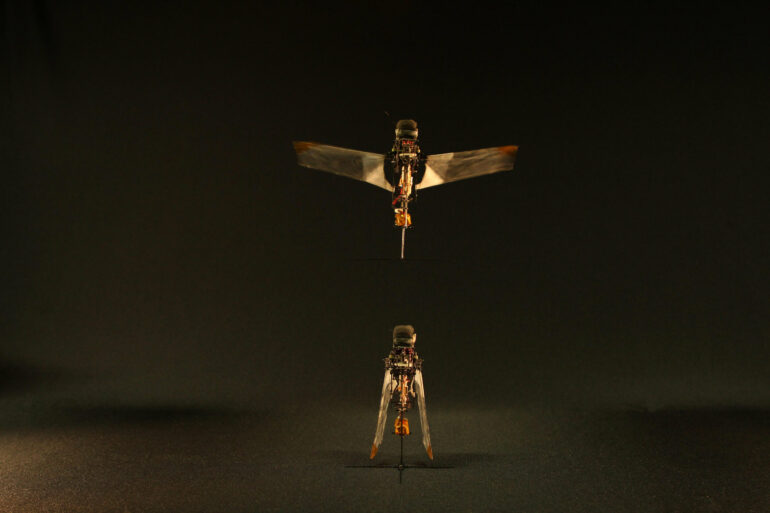An analysis of how rhinoceros beetles deploy and retract their hindwings shows that the process is passive, requiring no muscular activity. The findings, reported in Nature, could help improve the design of flying micromachines.
Among all flying insects, beetles demonstrate the most complex wing mechanisms, involving two sets of wings: a pair of hardened forewings called elytra and a set of delicate membranous hindwings. Although extensive research exists on the origami-like folds of their wings, little is known about how they deploy and retract their hindwings.
Previous research theorizes that thoracic muscles drive a beetle’s hindwing base movement, but experimental evidence to support this theory is lacking.
Hoang-Vu Phan and colleagues combine the use of high-speed cameras and a dynamically similar flying robot to address this research gap. The authors observe that rhinoceros beetles use passive mechanisms, including their elytra, when deploying and retracting their wings.
Deployment is a two-phase process in which elevation of the elytra partially releases their hindwings in a spring-like fashion, then a flapping motion brings the hindwings into a raised flight position. They also find the beetles use their elytra to lower their hindwings into a resting position passively.
Inspired by their observations, the authors make microrobots that mimic beetle wings’ passive deployment and retraction. They find the bots successfully take off and maintain flight.
Their findings suggest that transferring the beetle’s passive hindwing processes to a flapping robot design could help to improve the capabilities of small robots that need to operate in limited or cluttered spaces.
More information:
Hoang-Vu Phan et al, Passive wing deployment and retraction in beetles and flapping microrobots, Nature (2024). DOI: 10.1038/s41586-024-07755-9
Provided by
Nature Publishing Group
Citation:
Beetle-inspired robots show improved flight capabilities (2024, August 1)


